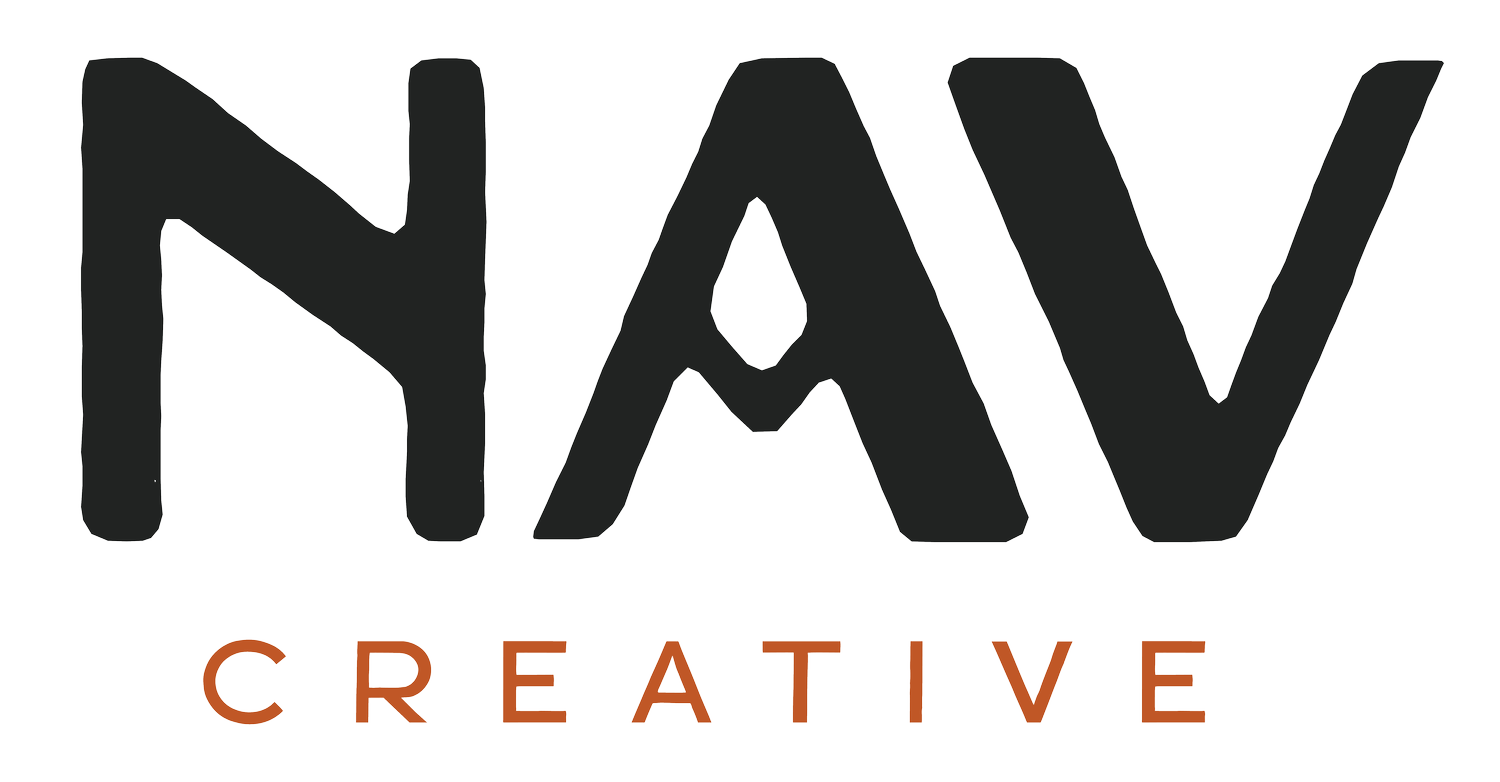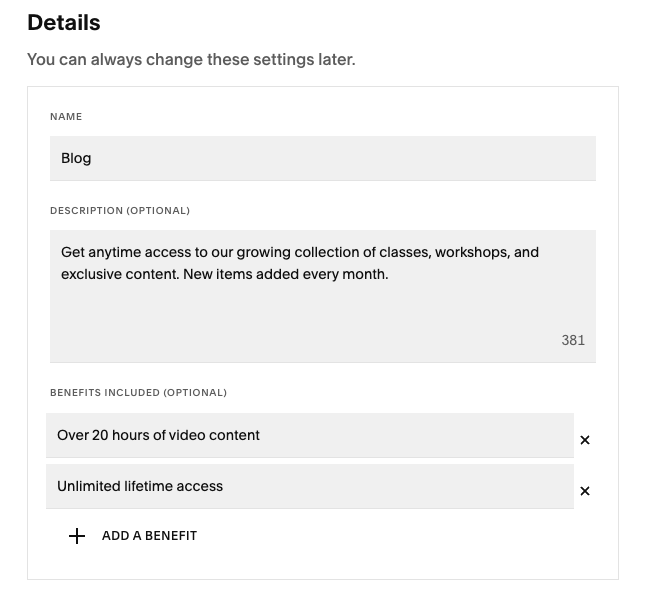Squarespace’s New Blog Paywall Feature - Everything You Need to Know
Squarespace recently launched a new update that lets website admins charge their visitors to view their blog posts. This new tool is still in its early stages and doesn’t have a ton of depth yet, but just having the option to profit from your blog content from subscriptions is an exciting development. So let’s dive into how Squarespace’s blog monetization works and discuss how you can make the most out of this new feature.
As of 2024, Squarespace has altered its approach for selling Member Areas and Courses and is now selling them as part of an all-inclusive subscription which covers "digital products" including Courses, Member Areas, and Monetized Blogs. Read here to learn more about how Digital Products on Squarespace work.
Basic Overview
A prompt from Squarespace’s new blog paywall feature prompting users to start monetizing their blog content.
When you set up a blog pricing plan on Squarespace, you can do more with it than just set a price for your content. Like most Squarespace add-ons, the blog paywall tool isn’t nearly as robust or flexible as alternatives on other platforms, but that doesn’t mean it's completely barebones.
The big thing you’ll do when monetizing your blog is set up the paywall landing page, where you can write a description of your blog content so people know what to expect, list off some of the unique perks of subscribing to your blog, and give some varying payment options, such as monthly or yearly subscription plans or one-time payment options.
Another nice element of Squarespace’s blog paywall is that you can include access to your blog as a stand-alone feature or as a feature of your members area. For example, if you have a member’s page where you sell courses or exclusive products for a recurring subscription cost, you can include access to your monetized blog as a perk of that member’s content.
You can also choose specific elements on your blog that you can leave free while monetizing the rest, which savvy bloggers can really use to their advantage.
What Goes Behind The Paywall
One of the best features of this new Squarespace update is that you have a lot of control over what you can put behind a paywall and what you can leave open to everyone. For example, you can select specific excerpts from your writing and display those to everyone, regardless of whether or not they’re paying for your blogs. For this, we recommend showing the first paragraph or first few sentences of your blog to get readers interested in your introduction.
You can also select certain posts and make them free to read for everyone so that you can hook people on your free content to show them what they’re missing out on. This is another way you can give your potential readers a chance to see what your content is all about and entice people to pay for the rest of your work.
Pricing Options
As it stands right now, you have three options for how you price your blog content. You can either leave your work free, set up a subscription service, or charge people a one-time payment for lifetime access to your blog page.
Free
Ever since Squarespace has had a blog feature, they’ve only let creators upload their blog content for free. That’s changed with the update, but if you enjoyed keeping your blog content accessible to everyone, you still have that option.
Having the option to charge for blogs and create another revenue source might be tempting, but there’s lots of value in keeping your posts free, or at least waiting to charge. Regular blog posts can be a great way to give your audience insight into relevant business updates, your industry knowledge, or even your personal life, depending on how you use your writing. And having all that information readily available can help build your audience for other revenue streams.
However, the most significant benefit of having a blog as a business is the impact it has on your search engine rankings. When search engines recommend pages as results, they boost ones with regular updates or content additions. It’s a way for search engines to verify that the websites they recommend are still relevant and still in business, and hosting a blog is a great way to naturally update your website with relevant content.
If you hide your content behind a paywall, search engines might not be able to index the content. So the natural SEO benefits that come with launching a blog will all be lost. On the other hand, if you keep all your blog content accessible, search engines shouldn’t have any problems registering the new pages and content, which should strengthen your website’s search engine rankings.
Subscription
With this recent Squarespace update, blog writers have two ways to profit directly from their posts. You can charge a one-time fee for lifetime access to your blog page, as we’ll look at in a bit, or you can set up a subscription plan that gives your audience access to your posts. You can let your subscribers choose between monthly, yearly, or even weekly billing cycles, or you can choose between the three and allow only one option.
If you’re new to blog writing and are planning to monetize your blog content, we would recommend doing so through a subscription set-up in most cases, especially if you create regular, frequent posts. Charging on a recurring basis lets you keep costs low enough to capture interest from new fans even if you don’t have much content on your blog.
One-Time Payment
If you’re starting a blog, we would generally recommend either keeping your posts free or charging on a subscription basis. However, if you’ve run your blog for a few years now or just have a lot of content, you might have more luck setting up your paywall as a one-time payment rather than as a recurring subscription.
For the one-time payment option to be worth the set-up, you will have to price your content a lot higher than you would charge per month for a subscription. That high initial cost might scare some people off, but if you have a lot of content readily available, it might be worth it for a lot of people.
On the other hand, if you’re charging a high fee for a blog that only has a handful of posts, people will be less likely to spend the money. Even if you’re planning on uploading more in the future, there should be some immediate return on investment with the one-time payment plan.
Enrollment Limits
An example of the details you can edit when setting up a Squarespace blog paywall page.
One final big feature to know about this recent Squarespace update is that you can set enrollment limits on when people can sign up for a price plan. So, if you wanted to run a limited-time discount for your blog to try and attract new people, you would set up a new payment option at a lowered cost and establish an enrollment limit so that the discounted rate expires after a specific date.
Squarespace Digital Products
If you do choose to monetize your blog, you will need a subscription to the platform’s digital products add-on plan. The baseline version of this Squarespace add-on is included with every website on a business plan or above, but you can also purchase it as a separate addition regardless of your website plan.
The most important thing to know about digital products as it relates to the blog paywall is that you will have to pay a transaction fee that varies depending on your add-on plan each time you sell a blog subscription. That fee starts at 9% of your total sale with the free version of the digital products add-on and decreases as the add-on costs get more expensive. With the Professional digital products add-on, you can get rid of the transaction fee altogether.
Though Squarespace’s blog paywall feature is still new and limited compared to alternatives on other website builders, it's still a new and exciting way to profit from your content.
Want to learn more about how to get the most from your Squarespace website? Book a consultation today to chat about our services.


